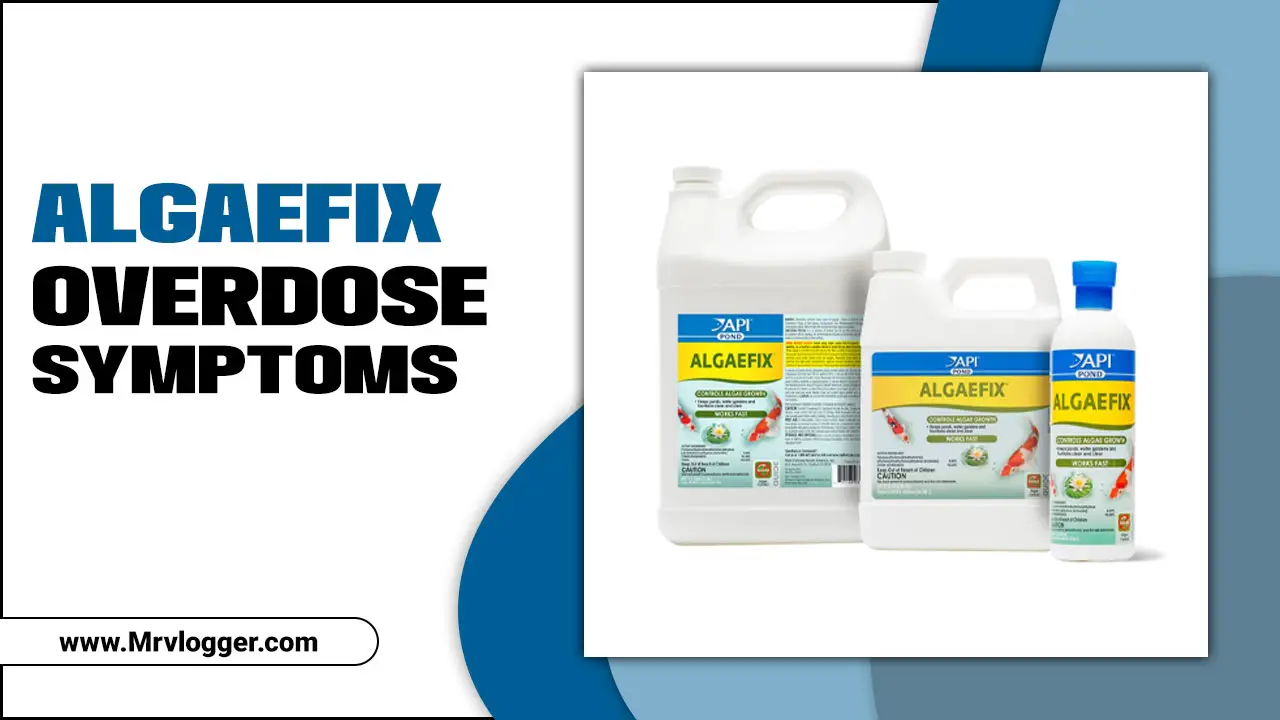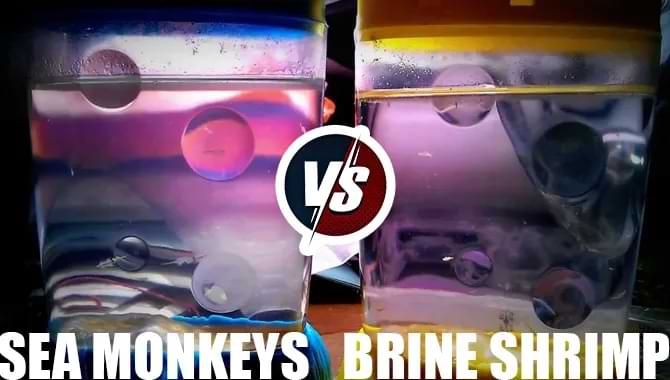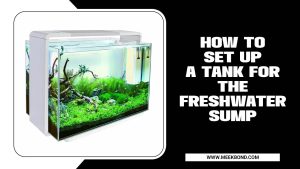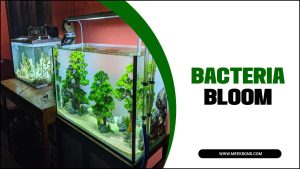As a fish owner, providing your fish with a safe and comfortable habitat is essential. Maintaining optimal water quality is crucial for the health and well-being of fish living in aquatic habitats.
Poor water quality can lead to stress, disease, and even death among fish populations. Regular monitoring and testing of water quality parameters are necessary to ensure a healthy environment for fish. Water quality directly affects fish species‘ health, growth, and reproduction.
It encompasses various physical, chemical, and biological factors that influence the suitability of the aquatic environment. Monitoring water quality parameters helps identify deviations from the optimal conditions for fish survival, enabling timely corrective actions. Here we’ll discuss how to test water quality for fish habitats. And tell the importance of trying water quality for fish habitats. So, read on.
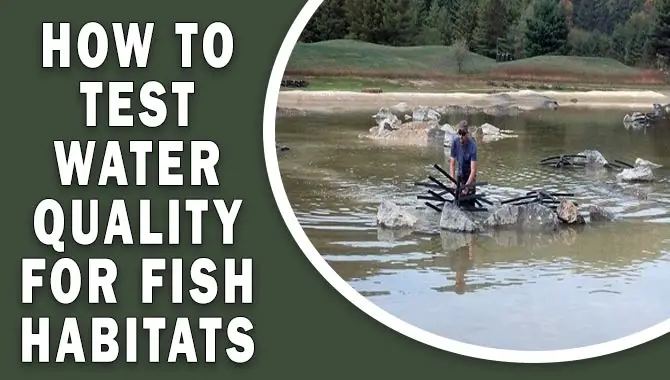
Tools You’ll Need Before Testing Water Quality For Fish Habitats
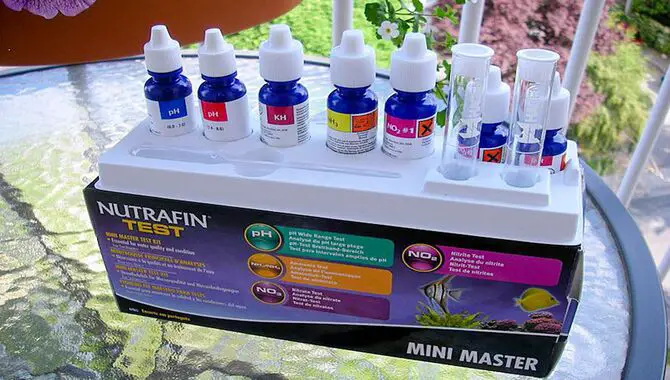
Gathering the necessary tools and equipment is essential before conducting water quality tests for fish habitats. These tools will aid in accurately measuring and assessing various parameters that affect the health and well-being of fish. Here are some essential tools you will need:
pH testing kit: A kit that includes pH test strips or a pH meter to measure the acidity or alkalinity of the water.
Dissolved oxygen (DO) testing kit: A kit that contains a DO meter or reagents to determine the amount of oxygen dissolved in the water.
Ammonia, nitrite, and nitrate testing kit: Kits that provide reagents or test strips to measure the concentrations of these nitrogenous compounds.
Turbidity testing kit: A kit that includes a turbidity tube or a turbidity meter to assess the clarity of the water.
Temperature Measurement: A reliable thermometer that can accurately measure water temperature. Consider using a digital thermometer with a waterproof design for convenience.
Secchi disk: A circular disk with alternating black and white quadrants used to measure water transparency or visibility.
Conductivity meter: An instrument that measures the electrical conductivity of water, providing information about salinity and total dissolved solids.
Personal Protective Equipment (PPE): Depending on the specific testing methods and potential hazards, consider using safety goggles, gloves, and lab coats to ensure personal safety.
How To Test Water Quality For Fish Habitats – By Following Easy Steps
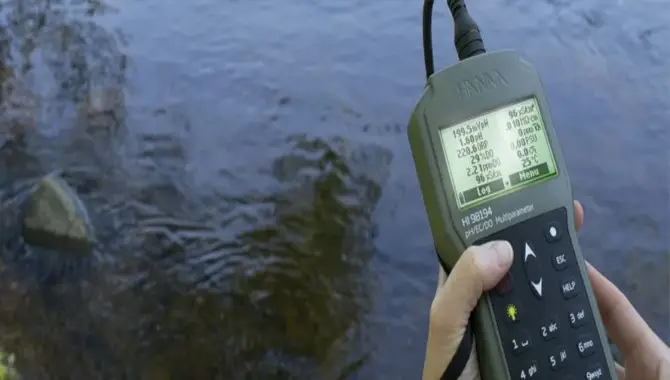
Testing water quality is the only way to identify and prevent potential hazards for aquatic life and maintain a healthy pond or lake ecosystem. Consistent water quality monitoring is crucial as it helps implement effective habitat protection measures and prevents long-term damage to fish habitats.
Poor water quality affects the growth and health of aquatic life by causing gill damage, reducing oxygen levels, increasing nitrogen levels, and promoting harmful algal blooms. The parameters that indicate poor water quality include pH levels outside the optimal range for species.
High nutrient levels include nitrate and phosphate from fertilizers or runoff, increased turbidity due to sedimentation or pollutants, low dissolved oxygen levels, and high carbon dioxide levels. Testing for alkalinity, magnesium, calcium, phosphorus, hardness, nitrite, ammonia, and dissolved oxygen levels.
And temperature can help maintain good water chemistry conditions suitable for different species, such as trout and warm-water fish. Additional practices such as adding beneficial bacteria or wetland restoration can further enhance. The water quality of fisheries while also providing recreational opportunities. Here we give you step-by-step guidelines on how to test water quality for fish habitats:
Step 1: Temperature Measurement
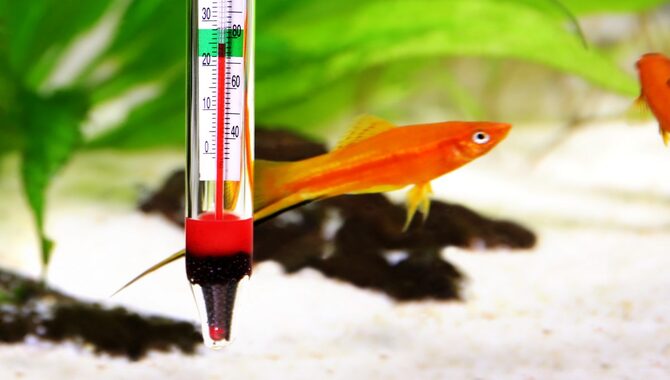
Maintaining a healthy fish habitat is difficult but achievable with proper monitoring and water quality testing. Water temperature plays a critical role in determining water quality for fish habitats. It affects the dissolved oxygen content in water.
This is essential for fish survival. Using thermometers to measure water temperature accurately is crucial to monitor its ideal range. And it varies depending on the type of fish and their life stage. Keep an eye out for any water temperature changes, as it could adversely affect your fisheries.
Regular water temperature testing and monitoring can help ensure a thriving fish habitat besides measuring the water temperature. You can also use other water tests to determine pH, nitrate, alkalinity, hardness, clarity, and nutrient levels. Monitoring these parameters can be beneficial in maintaining the necessary balance of healthy bacteria in aquatic environments.
It’s important to note that poor water quality can lead to issues such as algae growth, sediment buildup, fish kills due to reduced oxygen levels or exposure to pollutants such as fertilizers or runoff from nearby land use activities. Restoration efforts like wetland construction or pond dredging may be required if there has been significant damage caused by poor water quality.
Maintaining good water quality through regular monitoring and appropriate measures is crucial for providing a healthy environment for aquatic life. Remember to use calibrated equipment while taking measurements and following standard protocols and guidelines for accurate results.
Step 2: Dissolved Oxygen Test
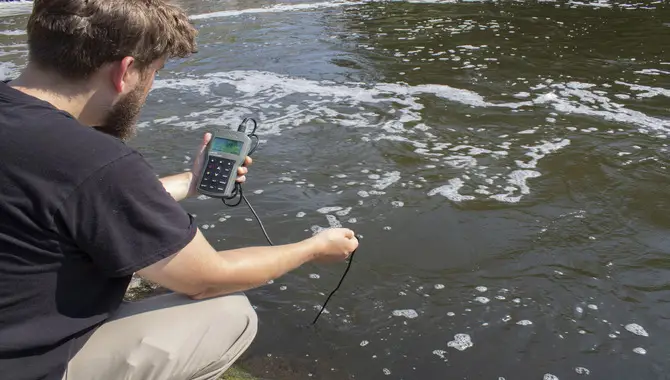
Testing for dissolved oxygen levels is one of the ways to ensure that we maintain good water quality for fish habitats. Poor water quality can adversely affect aquatic life by causing fish kills or harming the beneficial bacteria required for breaking down organic matter. To maintain optimal conditions. It’s essential to regularly monitor and test water chemistry parameters such as pH, nitrate, alkalinity, ammonia, magnesium, calcium, phosphates, and carbon dioxide with tools like turbidity meters and conductivity meters.
Apart from regular testing and monitoring, keeping other factors affecting water quality in check is necessary. Such as sediment runoff from nearby areas or over-fertilization from agricultural activities. Maintaining proper nutrient balance (nitrogen and phosphorus) through restoration techniques like wetland creation or taking measures such as reducing fertilizers at home is also critical to bettering your local fisheries’ health.
Step 3: Ph Testing

Maintaining the appropriate pH balance is one of the critical aspects of water quality testing for fish habitats. The pH level of water can significantly impact the survival and reproduction of aquatic life. Making it a parameter that should be carefully monitored.
It’s important to note that different fish species may require specific pH conditions. And maintaining a range of 6.5-8.5 is usually considered safe for most species. A pH that falls outside this range could lead to issues like gill damage or even fish death—warranting regular monitoring and maintenance.
Furthermore, certain environmental factors, such as acid rain or pollutants from fertilizers and other sources, can influence the pH level. Therefore, performing regular tests is crucial to ensure an optimal environment for aquatic life. Testing kits are readily available to help determine the pH levels efficiently and accurately without requiring specialized knowledge or training.
Step 4: Nutrient Analysis
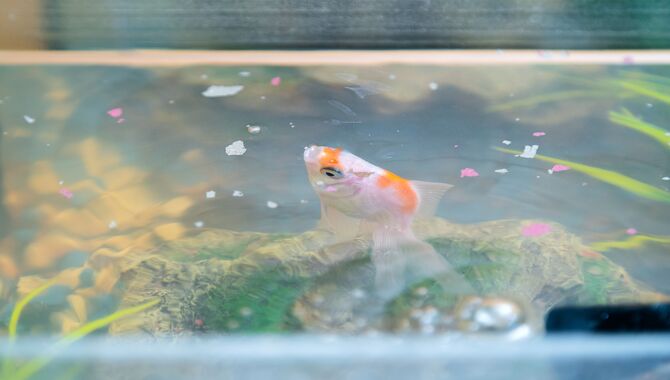
A vital aspect of testing water quality for fish habitats is nutrient analysis. This process measures the levels of nutrients, such as nitrogen and phosphorus, in the water. If these nutrients are present in excessive amounts, they can lead to harmful algal blooms that can cause a depletion of oxygen levels in the water, thus harming fish populations. Therefore, testing for nutrient levels is essential as it helps identify sources of pollution and guides conservation efforts towards protecting fish habitats.
Along with the nutrient analysis, other critical parameters to consider while assessing water quality include pH, dissolved oxygen levels, temperature regulation, turbidity management, and monitoring various pollutants like nitrogen and phosphates. Testing for these parameters regularly helps maintain healthy pond ecosystems essential for the survival of recreational fisheries and warm-water species like trout or aquatic plants.
Step 5: Turbidity Measurement
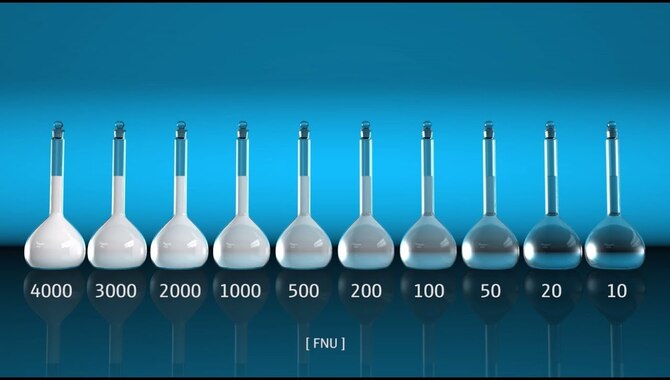
Maintaining healthy aquatic environments through regular testing and monitoring is crucial for sustainable fishing practices. Taking care of the water quality is essential for fish habitats’ protection and survival. It’s important to keep track of the main parameters that affect water chemistry, such as pH value, nitrate and phosphorus level, alkalinity level, dissolved oxygen level and hardness level.
Turbidity measurement has become increasingly important in recent years as it gives an insight into how clear the water is. The number of suspended particles like algae and sediment can be measured using tools such as a turbidimeter or Secchi disk. Keeping an eye on the colorado river’s Secchi depth will ensure that no pollutants are coming from runoff that may harm aquatic life and recreation opportunities at large.
Step 6: Testing For Toxic Substances

It is crucial to perform regular water quality testing to ensure a healthy aquatic environment for fisheries. One of the most critical aspects of this testing is checking for toxic substances such as heavy metals, pesticides, and fertilizers that can harm fish and their environment.
The chemicals present in these substances can cause poor water quality and reduced oxygen levels in aquatic life. Therefore, regularly checking the water chemistry parameters using test strips or lab testing methods is necessary. High levels of toxic substances indicate pollutants like runoff from fertilizers or acid rain that can lead to fish kills and harm beneficial bacteria and aquatic plants.
Water quality testing is the only way to detect pollutants in your pond water accurately. Besides heavy metals, you should also check for nitrate and phosphate levels that contribute significantly to algae growth leading to poor clarity affecting fish health and recreation activities like swimming. Other parameters such as pH levels, dissolved oxygen content, alkalinity hardness, calcium, magnesium, phosphorus, nitrite, ammonia and carbon dioxide should be monitored regularly too.
Monitoring turbidity levels with Secchi depth measurements will provide information regarding sedimentation or pollution in the water that may harm fish populations’ gills by reducing water clarity beyond natural levels. Given the severe impact of toxic substances and poor water quality on fisheries, regularly conducting water quality testing is essential to ensure healthy pond ecosystems.
Recording And Analyzing Data
After conducting water quality tests, recording and analysing the collected data is important. By keeping a log of your testing, you can identify trends and changes in water quality over time. This information will help you identify potential issues early on and take corrective measures before they become more severe.
Analyzing the data collected will also provide insights into the health of your pond’s ecosystem, allowing you to make informed decisions about the types of fish you can stock and other management practices necessary to maintain a healthy environment for aquatic life. Regular testing and recording data are essential to managing a healthy fish habitat.
By taking these steps, you can ensure that your pond remains a thriving ecosystem for fish and other aquatic life. So, if you’re looking to establish a successful fishery or maintain an existing one, prioritize regular water quality testing and data recording.
Interpreting Water Quality Results
Interpreting water quality results is an important step after conducting tests. It will help you understand the health of your pond’s ecosystem and the potential impact on fish habitats. Each testing parameter has a range of acceptable values; corrective steps should be taken if results fall outside those ranges. For example, high ammonia levels can cause stress to fish, while low dissolved oxygen levels can lead to suffocation.
Understanding the significance of each parameter and its impact on aquatic life is crucial in interpreting test results accurately. Professional advice from a fisheries biologist or aquatic ecologist may be necessary for proper interpretation.
By taking a proactive approach to interpreting water quality results, you can quickly identify potential issues and take corrective measures before they become detrimental to the health of your fish habitat. It’s also important to note that water quality can fluctuate throughout the year, depending on rainfall and temperature changes. Therefore, regular testing is essential for maintaining a healthy environment for fish and other aquatic creatures. You can keep your fishery thriving for years with little effort and attention to detail.
Conclusion
Testing water quality for fish habitats is crucial to ensure their survival and promote the growth of a healthy aquatic ecosystem. Testing water quality for fish habitats ensures fish populations’ long-term survival and well-being. By understanding and maintaining optimal water conditions, we can contribute to preserving diverse and thriving aquatic ecosystems for future generations.
We understand the different parameters such as temperature, dissolved oxygen levels, pH levels, nutrient content, turbidity, and toxic substances in water bodies. We can identify the issues affecting water quality and take corrective measures accordingly. Water quality can be tested quickly and accurately with the right tools and techniques. We hope the above online on how to test water quality for fish habitats will help you properly.
FAQs
What Are The Ideal Temperature Conditions For Fish Habitats?
The ideal temperature conditions vary depending on the fish species. It is essential to research the specific temperature preferences of the fish you intend to support in your habitat.
How Often Should I Test Water Quality For Fish Habitats?
Regular testing is recommended, especially during critical periods such as seasonal changes or observing unusual fish behaviour. Consult local authorities or fishery experts for specific guidance.
Can I Perform Water Quality Testing Myself, Or Should I Hire Professionals?
You can conduct essential water quality testing yourself using appropriate equipment and methods. However, seeking professional assistance for more complex analyses or specific substances of concern is advisable.
Are There Any Signs Of Poor Water Quality I Should Look Out For?
Yes, signs of poor water quality in fish habitats can include fish gasping for air at the surface. Unusual fish behaviour, fish deaths, or excessive algal growth. These signs may indicate the need for water quality testing.
Can Water Quality Testing Help Prevent Fish Diseases?
Monitoring and maintaining good water quality can reduce the risk of fish diseases. Clean and suitable water conditions support fish immune systems, minimizing the likelihood of disease outbreaks.

Aquarium passion is all about connecting with the aquatic life and providing education to the public on the importance of these creatures. We showcase a wide variety of marine life through our exhibits as well as working with schools to provide unique learning opportunities for students of all ages.


